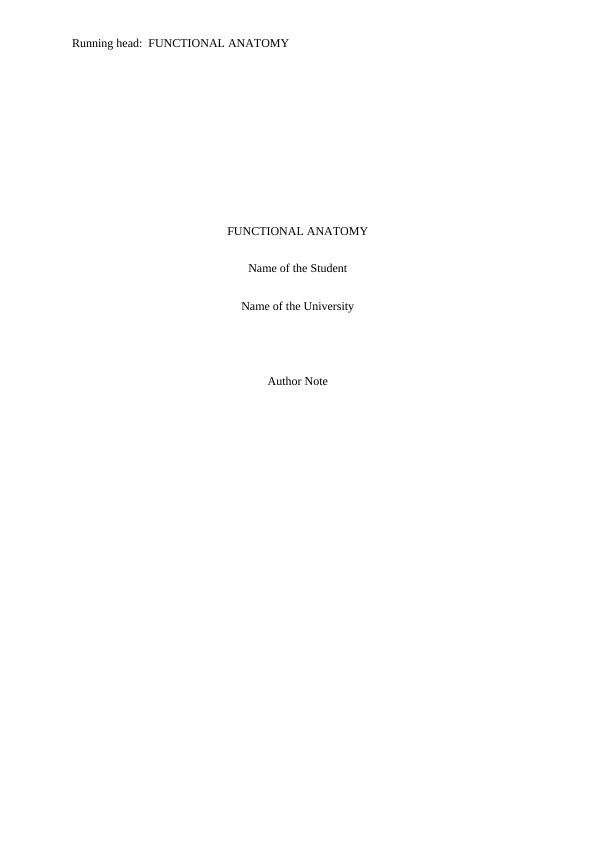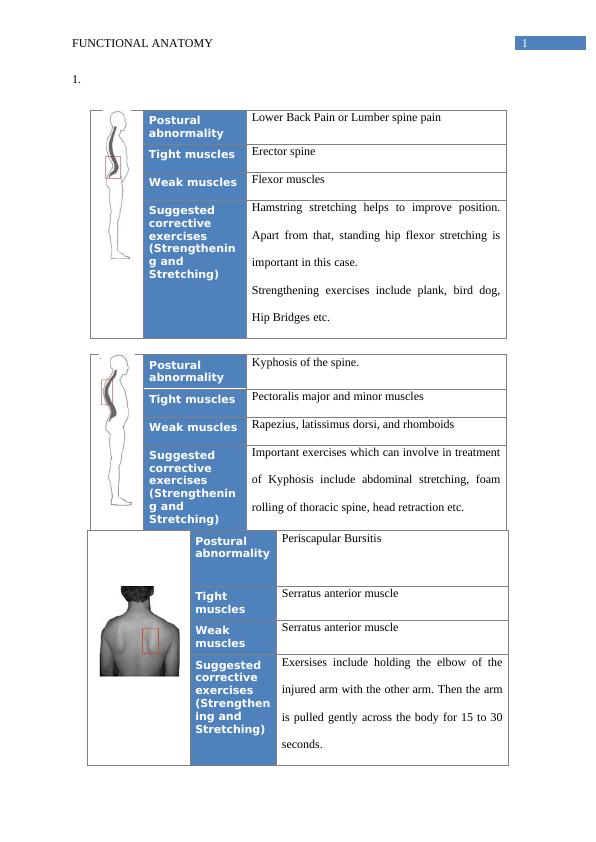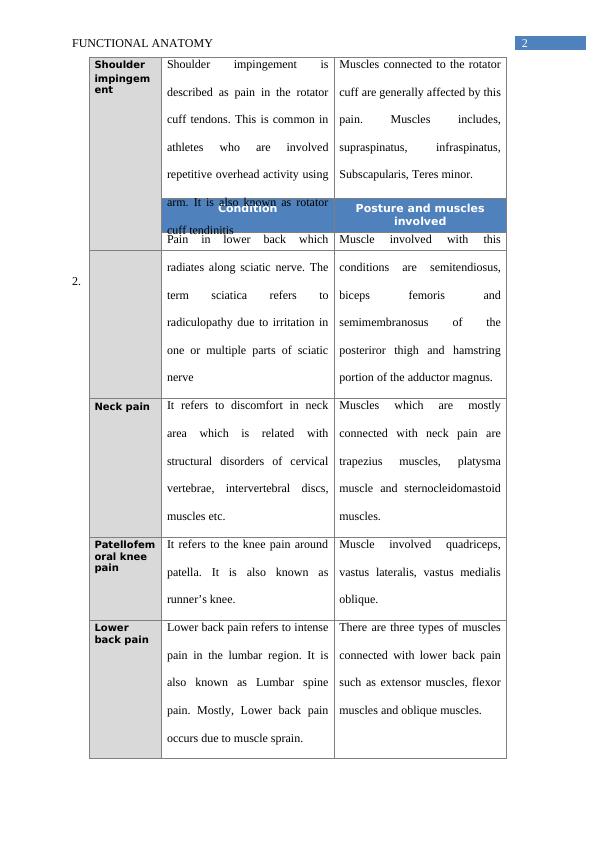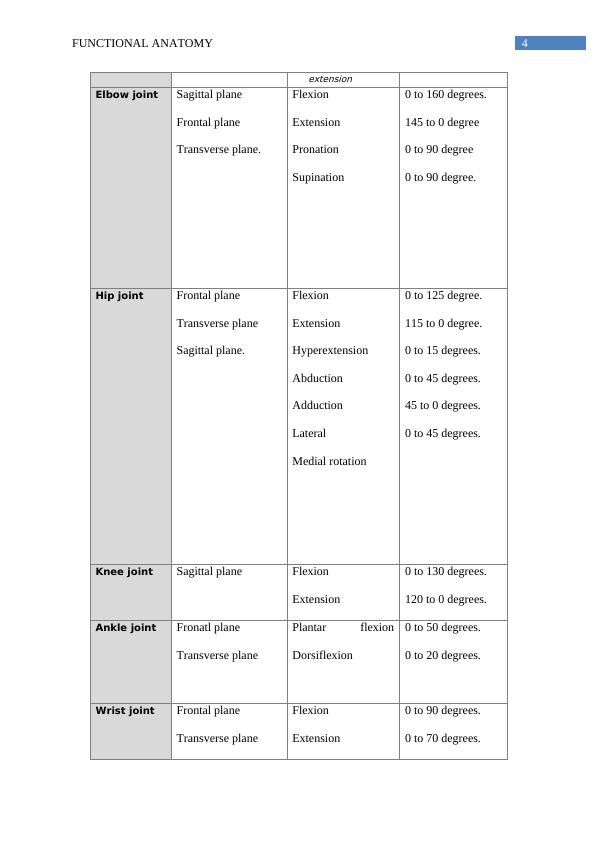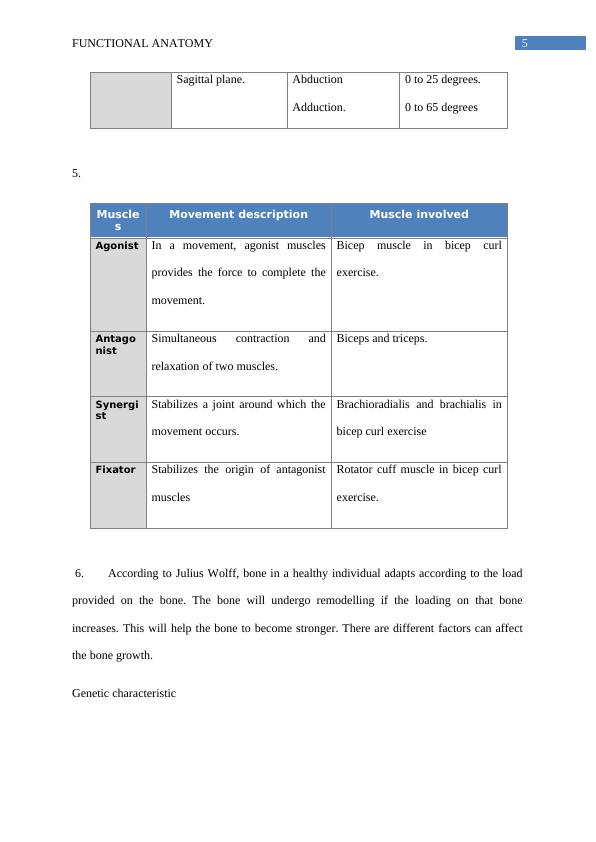Functional Anatomy for Corrective Exercises and Fitness Training
Assignments may include a variety of questions, this can include short or longer answer questions. These questions are designed to test how you apply your knowledge into a real-world situation. All assignments are completed as a Microsoft Word document and must be submitted through My eCampus for grading. Your assessor is looking for how you apply your knowledge and how you think critically about the topic area.
Added on 2022-11-13
About This Document
Functional Anatomy for Corrective Exercises and Fitness Training
Assignments may include a variety of questions, this can include short or longer answer questions. These questions are designed to test how you apply your knowledge into a real-world situation. All assignments are completed as a Microsoft Word document and must be submitted through My eCampus for grading. Your assessor is looking for how you apply your knowledge and how you think critically about the topic area.
Added on 2022-11-13
End of preview
Want to access all the pages? Upload your documents or become a member.

